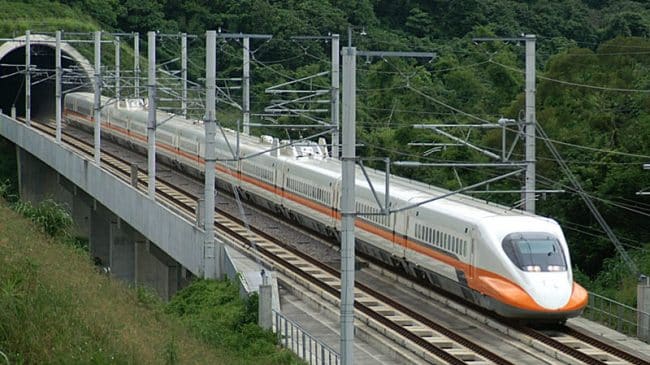Texas Central Railway proposes to privately finance, build and operate a high-speed passenger rail line between Houston and Dallas.
Opponents mistakenly claim that taxpayers will be stuck subsidizing the rail line, but this project actually provides a welcome opportunity for the private sector to deliver a fast, affordable transportation option with little or no risk to taxpayers.
Texans Against High-Speed Rail cites a 2013 study by my Reason Foundation colleague Baruch Feigenbaum that critiques government-funded, politically designed rail systems that cost taxpayers small fortunes.
Texas Central Railway says they agree with the main points in the Reason report – and that their project is fundamentally different. After looking into the details, I agree.
Like the privately funded All Aboard Florida project now underway to link Miami with Orlando, TCR has identified a corridor (out of 97 it analyzed) they believe has the right kind of distance (240 miles), two very high-population metro areas on either end and relatively low construction cost (flat terrain and no major tunnels or bridges).
By using faster (Japanese Shinkansen) trains, they will offer 90-minute trip times at fares competitive with airlines.
Farmers and ranchers are concerned about having their property acquired via eminent domain or their tranquility impaired by high-speed trains.
TCR says their needed width is just 100 feet, about the right of way of two-lane farm-to-market roads.
They plan to use eminent domain (as pipelines, electric companies and railroads are allowed to do) only as a last resort after making market-value offers for purchases or easements. Much of the line will be elevated, permitting highways and animal movements beneath it.
They say the Shinkansen technology is quieter and has less vibration than other passenger rail systems.
As in Florida, opponents say there will inevitably be taxpayer subsidies, since high-speed rail is almost never self-supporting from its passenger revenues (as the Reason report and many other studies make clear).
TCR says they will neither seek nor accept government grants or subsidies of any kind. They will consider federal credit assistance such as loans under the Transportation Infrastructure Finance and Innovation Act (TIFIA) and/or the Railroad Rehabilitation & Improvement Financing (RRIF) program.
Like the Florida project, TCR might seek DOT approval to issue tax-exempt private activity bonds (PABs), which are widely used on highway public-private partnership projects.
PABs are backed by project revenues. Taxpayers are not on the hook if the project defaults; only the bond buyers are.
Texas Central Railway and All Aboard Florida are private-sector projects, to be done via project finance that must be paid back from the project’s own revenues. There is little or no risk to taxpayers, federal or state, in either project.
Whether either one can build their project within the estimated budget or attract the riders and revenue in their financial models remains to be seen. That is the legitimate concern of those who choose to invest equity in the project or to buy its bonds.
Both projects should receive the same legal and regulatory treatment as any other railroad – no more, no less, as long as there are no taxpayer monies involved.
After the sorry track record of politically defined passenger rail systems, I am very interested to see what the private sector can do.
Robert Poole is director of transportation at Reason Foundation. This article originally appeared in the Star-Telegram.

